Find neuropathy relief with doctors preferred treatment for neuropathy in legs and feet in Claymont, DE
For many Americans, living with neuropathy is one of the greatest challenges they face. Present in about 8% of people around the world, neuropathy - or peripheral neuropathy, to be more accurate - can affect anybody. In the United States alone, there are more than 40 million people with neuropathy, with health costs surpassing $4 billion each year. Approximately 10% of people over 40 years of age get neuropathy, as do 50% of diabetics and 20% of patients receiving cancer chemotherapy. In fact, the number of people with neuropathy is only increasing as diabetes becomes more common, the population ages and people with HIV/AIDS live longer.
While some patients have a higher risk of developing specific types of peripheral neuropathy, it does not discriminate between race, sex, age, personal circumstances, or medical history. Fortunately, neuropathy awareness is growing, and by proxy, so are new treatment options. If you've been suffering from the symptoms of neuropathy and are in search of a solution, Kennedy Health Clinic can help with our doctors preferred treatment for neuropathy in legs and feet in Claymont, DE. From advanced therapies to state-of-the-art technology, we utilize the latest advancements in pain management to help you regain your quality of life.
But to truly understand how neuropathy treatment can help, it's important to first understand the disease and how it affects your nervous system.
Peripheral neuropathy is a term used to describe nerve disorders that affect a specific part of your nervous system. There are several conditions that can lead to peripheral neuropathy, resulting in a variety of symptoms. The symptoms and the body parts affected by peripheral neuropathy depend on the underlying cause.
Peripheral neuropathy can manifest in a variety of ways. It has the potential to impact a single nerve, a group of related nerves, or numerous nerves in several areas of the body. The specific symptoms will vary based on which type of nerve signals are affected, and it is possible for multiple signal types to be involved.
Symptom types include the following:
- Sensory and Pain
- Motor
- Autonomic
Now that we've covered some of the most difficult symptoms to live with when you have neuropathy, you're probably wondering how Kennedy Health Clinic can help. Before recommending treatment, your neuropathy doctor will suggest one or more diagnostic tests for a full-body analysis. Doing so will help our team provide better neuropathy treatment for both short and long-term needs.
People living with neuropathy have to deal with difficulties that most men and women in America don't ever think about. It's understandable, then, that they may become tired and even depressed because of their condition. That's where Kennedy Health Clinic steps in - to provide advanced neuropathy treatments and, ultimately, enhanced quality of life.
At Kennedy Health Clinic, we're dedicated to improving the overall health and well-being of our patients. We offer effective pain management treatments and holistic healing options to provide comprehensive care. Our commitment to our patients has made us a trusted partner in health and wellness - and we're ready to help you, too.
If you're suffering from nerve pain or other symptoms due to neuropathy, it's time to seek professional help. Our advanced neuropathy treatments are tailored to your body, your health needs, and your neuropathy goals. That way, we can give you the most effective and efficient care possible. When you trust our team of knowledgeable doctors, you're taking the first step toward a normal life without the painful surprises caused by neuropathy. Contact our office today to get started.
Service Areas
Neuropathy 101
Peripheral neuropathy is a term used to describe nerve disorders that affect a specific part of your nervous system. There are several conditions that can lead to peripheral neuropathy, resulting in a variety of symptoms. The symptoms and the body parts affected by peripheral neuropathy depend on the underlying cause.

The Anatomy of Neuropathy
The nervous system in the human body is divided into two parts - the central nervous system and the peripheral nervous system. The central nervous system comprises the brain and spinal cord, while the peripheral nervous system includes all other nerves present in the body. That includes those that travel from the spinal cord and brain to supply the face and other parts of the body.
Whenever there is any condition that affects the peripheral nerves, it is referred to as peripheral neuropathy. Healthcare providers often use the terms "neuropathy" and "polyneuropathy" interchangeably with "peripheral neuropathy." It is important to note that peripheral nerves, being the farthest from the central nervous system, tend to show the earliest and most severe effects of these conditions.
How Does Neuropathy Affect Your Body?
In order to comprehend the impact of peripheral neuropathy on your body, it's useful to have some knowledge about neurons - a crucial type of cell that forms your nerves. These neurons utilize electrical and chemical signals to transmit and relay messages throughout your nervous system. Each neuron in your body is made up of the following:

Cell Body
A cell body is the primary part of a cell.

Axon
An axon is a long, arm-like projection that extends from the cell body of a neuron. At the end of the axon, there are several finger-like extensions called synapses, which convert the electrical signal in the neuron into a chemical signal. These synapses then transmit the signal to other nearby nerve cells.

Dendrites
Dendrites are small, tree-like extensions on the cell body that receive chemical signals from nearby neurons' synapses.

Myelin
This is a protective covering made up of thin, fatty chemical compounds that surround the axon of many neurons.
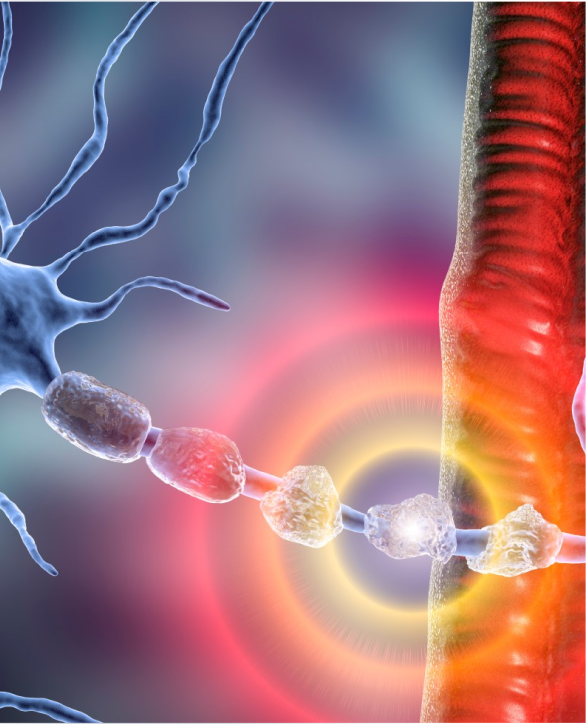
The development of peripheral neuropathy and how long it takes depends on its underlying cause. If the cause is an injury, it can develop instantly or within a few hours. However, some forms of peripheral neuropathy caused by toxins or inflammation may develop rapidly over days or weeks. In contrast, most other conditions that cause peripheral neuropathy take months, years, or even decades to develop. Regardless of the cause, modern advances in medicine give patients hope for recovery, using doctors preferred treatment for neuropathy in legs and feet in Claymont, DE.
Motor Symptoms of Neuropathy
The peripheral nervous system in your body carries motor signals that originate in your brain and are sent to your muscles. These signals allow you to move around and carry out various physical activities. For your muscles to remain healthy and function properly, they require nerve connections to the brain. Some motor symptoms include:

Atrophied Muscles
Nerve connection loss causes your muscles to weaken and shrink. With peripheral neuropathy, this happens most often in your lower legs, feet, and hands. Occasionally, patients will experience deformities in their hands and feet due to muscle loss.

Muscle Paralysis and Weakness
Muscle weakening is a common issue caused by nerve deterioration from peripheral neuropathy. This condition can result in paralysis, making it difficult to move toes or causing foot drop and hand weakness. Additionally, it can also affect muscles in other areas of the body, such as the thighs and arms.
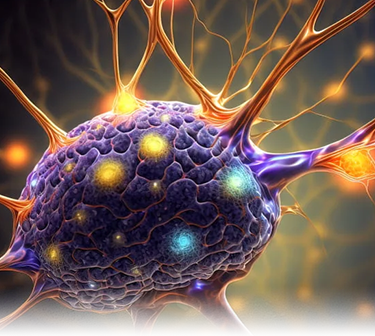
Uncontrollable Movements
When nerves lose a connection to your brain because of your neuropathy, they can become hyperactive, resulting in uncontrolled muscle movements and cramps.
Did you know that your body has several processes that happen automatically without your conscious effort? These automatic functions are known as autonomic processes, and they include things like sweating, digestion, and blood pressure control. Autonomic nerve fibers are responsible for carrying signals for these automatic processes. However, disruptions in these signals can cause your body's automatic processes to malfunction. Some of these processes may work intermittently, while others may not work at all.
Some autonomic symptoms of neuropathy include:
Kennedy Health Clinic's Doctors Preferred Treatment for Neuropathy in Legs and Feet in Claymont, DE
People living with neuropathy have to deal with difficulties that most men and women in America don't ever think about. It's understandable, then, that they may become tired and even depressed because of their condition. That's where Kennedy Health Clinic steps in - to provide advanced neuropathy treatments and, ultimately, enhanced quality of life.
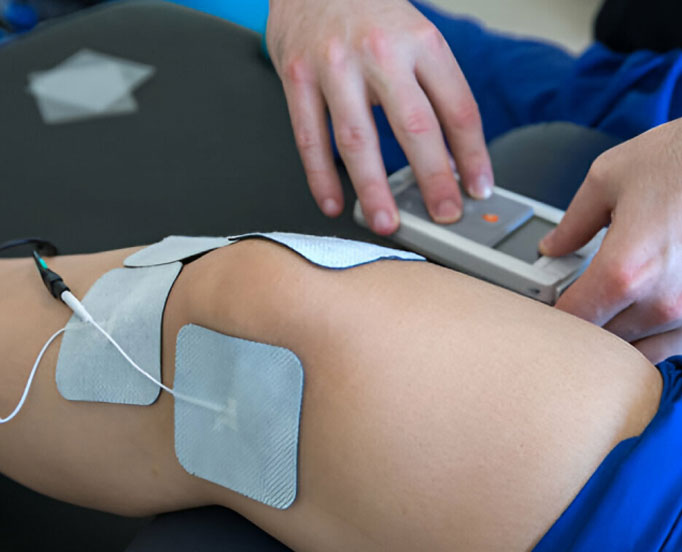
Some of our most popular neuropathy treatments include:
This device is designed to improve blood and oxygen flow, which in turn promotes optimal nerve and nervous system functionality. As a result of the healthy, oxygenated blood, damaged or weak nerve endings receive a rejuvenating boost, which may be experienced as a slight tingling sensation.
Did you know that infrared lights have amazing benefits for our bodies? They can help repair cells and improve the circulation of oxygen-rich blood, which in turn promotes faster healing of deep tissues and relieves pain.
For individuals dealing with diabetic neuropathy, the primary objective is to either reverse diabetes or decelerate its progression. Functional medicine involves incorporating lifestyle modifications to maintain blood sugar levels consistently at a healthy range, which all but eliminates diabetes. Choosing functional medicine recommendations is almost always preferred over invasive and more complicated treatments, and our team is here to help you get started.
Our providers may suggest advanced cellular therapy as a final option for those who have tried other treatments without success and are suitable candidates. This therapy can assist in improving the healing and treatment process of individuals who are experiencing neuropathy.
Living a life free of neuropathy symptoms doesn't have to be a pipe dream - it can be an achievable goal with the help of our advanced neuropathy therapies. Contact Kennedy Health Clinic today to schedule your free initial consultation. Before you know it, you'll be well on your way to long-term recovery and pain relief.
Latest News in Claymont, DE
Agile Cold Storage plans $170M Claymont warehouse
Jacob Owenshttps://delawarebusinesstimes.com/news/agile-cold-storage-delaware/
CLAYMONT – A cold-storage and distribution company aims to invest upward of $170 million into a new facility at the former steel mill in Claymont.While most of the millions of square feet built in Delaware in the last five years is typical four-wall warehousing, Georgia-based Agile Cold Storage aims to build a climate-controlled warehouse at its First State Crossing project off Naamans Road in northern Delaware.Agile is a 3-ye...
CLAYMONT – A cold-storage and distribution company aims to invest upward of $170 million into a new facility at the former steel mill in Claymont.
While most of the millions of square feet built in Delaware in the last five years is typical four-wall warehousing, Georgia-based Agile Cold Storage aims to build a climate-controlled warehouse at its First State Crossing project off Naamans Road in northern Delaware.
Agile is a 3-year-old, third-party logistics provider that stores and distributes for other companies. It has two existing warehouses in Georgia with a third on the way, but this would be its first out-of-state expansion for the Gainesville, Ga., company.
John Ripple, senior vice president for automation at Agile, explained that each facility typically supports three to five customers, and that the Delaware facility would bring one existing Agile customer to it with another bringing its operations from the Port of Newark, N.J.
Agile plans to import food products at nearby ports to distribute within the mid-Atlantic region. The 265,000-square-foot warehouse would be built in two phases, with construction aimed to begin this fall and last upward of five years. It will support the creation of 130 new jobs, with an average annual salary of about $56,000.
To support the hiring and construction, the state’s job investment board, the Council on Development Finance (CDF), approved on Monday a grant from the taxpayer-backed Strategic Fund worth more than $4.56 million. It’s the largest grant approved by the CDF this year.
“We are excited that Agile Cold Storage is choosing Delaware for its next facility. This will create good jobs and economic investment in Claymont,” Gov. John Carney said in a statement after the grant’s approval. “Their operations will build on Delaware’s strong foundation in food manufacturing and transportation, helping our region’s supply chain.”
Ripple told the CDF that geography played a big part in Agile’s interest in the Claymont site, as it lies about midway between the Port of Wilmington and the Packer Avenue Terminal in Philadelphia.
Right now, existing customers that are utilizing the Philadelphia terminal are being shipped to South Jersey and then back west to end users, and Ripple said that Agile would prefer to bring those products to Claymont. Another client that is using the Port of Newark, N.J., would like to come to the Port of Wilmington, but there isn’t any cold-storage capacity, he said.
The Agile warehouse would lie near the Interstate 95 interchange across the road from the former Tri-State Mall. It marks a departure from the original development plan from Community Development Company (CDC) announced before the pandemic, which had targeted the 31-acre parcel for office and retail development.
CDC Executive Vice President Stephen Collins has said that the downturn in office demand amid the new work-from-home and hybrid work trends convinced his firm to pursue a new best use for the site that was previously the steel mill’s scrapyard.
“This was originally slated to be a high-rise office building but, as you know, the market for office space is pretty slow right now and this very attractive cold storage facility came forward. So, we were able to strike a deal with them,” Collins told the state’s planning office this past spring.
The project has been approved for expedited review by New Castle County’s Jobs Now program and the Delaware Department of Transportation, potentially speeding the time to build for the industrial-zoned site.
In Delaware, there are only four current cold-storage warehouses, with two on the Port of Wilmington site to accommodate produce leaving refrigerated ships. The warehousing niche has been seeing growing demand by investors, however, with 39% of investors expressing interest in the industry in CBRE’s 2022 Investor Intentions Survey – up from 7% in 2019.
Megan Kopistecki, the senior manager for business development at the state’s public-private economic development agency, Delaware Prosperity Partnership, which has been working with Agile on the project for about a year, emphasized the demand for newer cold-storage space.
“Demand for cold storage facilities is at an all-time high right now. More than 70% of all storage facilities in the U.S. were built before 2000, with the average facility more than 40 years old. Older facilities lack the taller ceilings and the wider column spacing that allow for increased inventory and more efficient operations,” she said.
Cold-storage warehousing is considerably more expensive to build than regular warehousing because of the industrial chillers and insulation required to keep refrigerated or even subzero temperatures in a space. Those costs usually lead to higher asking rents and longer leases though, providing some job stability for local markets.
At First State Crossing, the cold-storage warehouse would join a traditional, 385,000-square-foot speculative warehouse being built just to the southeast by First Industrial Realty Trust, a top publicly traded real estate investment trust. It would also sit across the street from another redevelopment project where New York-based developer KPR will raze the former Tri-State Mall and build a 525,000-square-foot distribution center.
The trio of projects aim to kickstart the Claymont economy that has suffered following the closure of the Evraz steel mill, with CDC aiming to invest upward of $1 billion to reimagine its site with retail stores, offices and housing too.
Another Rite Aid has closed, this time in Claymont
Ken Mammarellahttps://delawarelive.com/another-rite-aid-has-closed-this-time-in-claymont/
Rite Aid’s declaration of bankruptcy in mid-October was quickly followed by the announcement that it was closing two stores in Delaware – in Che...
Rite Aid’s declaration of bankruptcy in mid-October was quickly followed by the announcement that it was closing two stores in Delaware – in Chestnut Hill Plaza near Newark and at 3209 Kirkwood Highway, near Prices Corner.
The only Rite Aid in Claymont – at 2713 Philadelphia Pike – closed Nov. 16, but without any announcement to customers.
Rite Aid now lists 33 locations in Delaware.
The company did not respond to requests for information about the closure in Claymont or whether any other Delaware locations are scheduled to be closed.
On Take Back Claymont, a private Facebook group, posters said that the store’s last day was Nov. 16.
People also said that they were surprised that prescriptions filed at the Claymont Rite Aid were transferred to Walgreens. Others said that employees told them it was contracturally or legally mandated to be transferred to the nearest pharmacy. Walgreens has a location at 1508 Philadelphia Pike.
After the bankruptcy, Rite Aid said it was closed 154 stores nationwide. Hundreds of more Rite Aid locations are likely to close, The Wall Street Journal reported.
Walgreens is also closing locations, the Take Back Claymont discussion continued. A Brandywine Hundred location at 4201 Concord Pike (near the Silverside Road intersection) is permanently closed, and there’s a Walgreens at 2119 Concord Pike, in the Fairfax Shopping Center.
Pharmacy closures are a trend.
“More than 16 percent of the independently owned rural pharmacies in the United States shut down between March 2003 and March 2018,” The Washington Post reported, citing a policy brief by the RUPRI Center for Rural Health Policy Analysis at the University of Iowa.
Drugstore chains “are closing thousands of stores, leaving gaps in communities for medicines and essentials. Researchers find pharmacy closures lead to health risks such as older adults failing to take medication,” CNN wrote in October.
Pharmacies and pharmacists were hit hard during the pandemic, and Delaware lost all of its 24-hour pharmacies.
Just ahead of the wrecking ball, Claymont's Tri-State Liquors opens in brand-new building
Matthew Korfhagehttps://www.delawareonline.com/story/money/business/2024/01/11/as-its-mall-gets-demolished-tri-state-liquors-moves-to-new-building/72177180007/
For months, Tri-State Liquors has been the sole tenant in Claymont's once-bustling Tri-State Mall property.The mall itself is long gone, closed since 2015 and crumbled six years later by the probing claw of a big digger. The same goes for t...
For months, Tri-State Liquors has been the sole tenant in Claymont's once-bustling Tri-State Mall property.
The mall itself is long gone, closed since 2015 and crumbled six years later by the probing claw of a big digger. The same goes for the former Levitz furniture store next door. The property's owners, developer KPR Centers, plan a 525,000-square-foot warehouse, one of at least three massive warehouses arriving to change the landscape of Claymont.
More:What to know about Delaware's warehouse and industrial projects slated for 2024
But Tri-State Liquors, here since 1984 as one of the largest wine and beer and liquor stores in the state, has remained in the Tri-State strip mall property adjoining the former mall.
The store — which advertises "20,000 cases of imported and domestic beers, soda, wine, wine coolers, liquor and more" — kept its doors open even as other tenants disappeared, and as digging crews began laying the groundwork for the new warehouse's foundation.
"We always knew we had a long-term lease in place," said Tri-State Liquors co-owner Andrew Byer, whose father Joe founded the store 39 or so years ago and who now runs the store with his brother, Michael. "It was just a matter of figuring out what to do."
More:New Tri-State Mall owners to redevelop property starting with demolition of Levitz building
And so KPR built Tri-State Liquors a spiffy new green-awninged 15,000-square-foot building next door. Slowly over recent weeks, the Byers have been filling the space with new beverage deliveries while keeping the old store running.
"It was a win-win situation," Byer said. "We got the new building, and they're gonna get their nice project."
On Jan. 11 at 4 p.m., the family-owned wine, beer and liquor superstore will say goodbye to its former home and cut the ribbon to its new one, pretty much next door at 383 Naamans Road.
"We'll have food, we'll have a bunch of tastings going on, and we invited a bunch of people down," Byers said. "It'll be nice."
As of the day before its grand opening, the store was already mostly filled with everything from cabernet sauvignon to aged Scotch, with shelf after shelf of what Byer calls "the coldest beer case in the county." (That's 36 degrees, for the record.) A new battery of big-screen TVs means that customers can watch the Eagles or Phillies game while out on beer runs.
The original location was intended to stay open through Jan. 10, Byer said. But a power outage at the strip mall after Tuesday's storm meant they had to close the store a day early. The brothers hadn't intended to even lose a single day's worth of revenues, keeping the shelves at the first store fully stocked even as they filled the shelves of the new one.
They have a week to vacate the old property, Byer said. And then it's due to come down.
But the new store's opening day will have special significance for the family. Jan. 11 is the birthday of the store's founder, Joe Byer, a fact Andrew didn't even realize until he said the date out loud and an employee brought it up.
And so the store's first day in its new location will also be an homage to the person who started it all in 1984.
"We just lost him, so it's a little sentimental to us," Byer said. "But this is our 40th year. And we had a chance to move and open up this really nice store, and be a big part of the Claymont revitalization."
Matthew Korfhage is a business and development reporter in the Delaware region covering all the things that touch land and money. This may include tacos, oysters or beer. Send tips and insults to [email protected].
Reconnecting Claymont to the Delaware River
Adam Thomashttps://www.udel.edu/udaily/2023/october/claymont-steel-bezos-earth-fund-coastal-resilience-design-studio/
Coastal Resilience Design Studio students created conceptual plan that helped Claymont receive $1.5 million grantThroughout its history, Claymont, Delaware, has had a special connection to the waters of the Delaware River. Located near the mouth of Naamans Creek in the northeast corner of Delaware, Claymont has been occupied since at least 1200 A.D., according to the Claymont Historical Society. The creek is named after the chief of the Lenape, the Indigenous people who inhabited present-day Delaware, New Jersey, eastern Pennsylvani...
Coastal Resilience Design Studio students created conceptual plan that helped Claymont receive $1.5 million grant
Throughout its history, Claymont, Delaware, has had a special connection to the waters of the Delaware River. Located near the mouth of Naamans Creek in the northeast corner of Delaware, Claymont has been occupied since at least 1200 A.D., according to the Claymont Historical Society. The creek is named after the chief of the Lenape, the Indigenous people who inhabited present-day Delaware, New Jersey, eastern Pennsylvania and Hudson Valley, New York.
But when two major highway projects — I-95 and I-495 — began in the early 1960s, Claymont suddenly found itself separated from the water.
Reconnecting Claymont to the water, and infusing the census-designated place with more green spaces, has been a refrain from the community that Delaware House Representative Larry Lambert has heard frequently — both from growing up and living in the community and serving on the board of the Claymont Renaissance Development Corporation (CRDC).
So when a 300-plus-acre site near the river that was once home to a steel mill and is now owned by the Commercial Development Company opened up for a redevelopment plan, Lambert said that getting a riverfront park was one of the community’s main priorities.
“One thing that has always been consistent when we got community input on what they would like to see [in the area] is a riverfront park,” Lambert said. “Getting a riverfront park is us delivering to the community what the community asked for.”
Having grown up in Claymont, Lambert said he remembers hearing stories from older residents about how they used to go down to the water and fish. When he was a teenager himself, Lambert and his friends found creative ways to navigate from Claymont down to the river.
“You can clearly see when you go down there that at some point, the community likely did have access to this riverfront,” Lambert said. “So that’s what we’re trying to do. We’re trying to return Claymont back to what it once was.”
In order to get funding for a riverfront park, however, Claymont needed a conceptual design that could show off the park’s potential, including social, economic and environmental benefits.
That’s where the University of Delaware and students from the Coastal Resilience Design Studio (CRDS) stepped in.
Using the former steel site as a starting point for the park, and using the community’s input gathered from the North Claymont Area Master Plan, which held a series of three community workshops conducted in 2017 by the Wilmington Metropolitan Area Planning Council (WILMAPCO), the students in the CRDS were able to put together a Riverfront Park Conceptual Plan for Claymont.
Through Lambert, that design eventually found its way to the Bezos Family Foundation and helped secure a $1.5 million grant from the Bezos Earth Fund’s Greening American Cities initiative.
Brett Saddler, executive director of the CRDC, was emphatic in his praise of the design put together by the CRDS students and said that without the design, it might not have been possible to get the Bezos grant.
“We were looking for a way to put together a concept design for the park, but we didn’t have the resources to hire a design firm,” Saddler said. “Unless you have a visual representation to show how we’re going to make this happen, the idea is not going to get any traction. It’s just going to be this vague idea floating out there in the ether.”
Philip Barnes, assistant professor and policy scientist at UD’s Joseph R. Biden Jr., School of Public Policy and Administration’s Institute for Public Administration who also serves on the board of the CRDC, suggested to Saddler that the CRDS might be able to put together a plan. Saddler said when he received the students’ final project, he was impressed by how professional it looked.
“When I got a copy of the draft, I was floored,” Saddler said. “I thought it was as good as anything that we would have spent $50,000 on — minimum — for a concept plan from a professional design firm. We’re ready to hit the ground running to continue fundraising, and we have that leg up because we have a great plan done by the UD students as a concept.”
The plan aimed to create a space that provided recreational opportunities for the community, such as riverfront access, trails, sports fields, an event space and a marina. This plan would also help to enrich Claymont’s regional profile and offer resilient solutions to ensure the longevity and vibrancy of the development in the face of a changing environment.
Jules Bruck, an affiliated faculty member at UD and director of the University of Florida’s School of Landscape Architecture and Planning, said the CRDS was happy to partner with the CRDC and other partners involved with the project, including Delaware Greenways, the East Coast Greenway Alliance and Delaware Sea Grant (DESG). In partnering with the East Coast Greenway Alliance, the plan looked to create connectivity with the East Coast Greenway, which consists of 3,000 miles of trails from Maine to Florida across 15 states.
The CRDS, a partnership between the Delaware Sea Grant College Program, the University of Delaware Sustainable Coastal Communities Initiative and the University of Delaware Landscape Architecture Program, was led by Bruck, DESG coastal communities development specialist Ed Lewandowski, and Ben Muldrow of Arnett, Muldrow, LLC, at the time the project was completed.
Lewandowski said it was a special feeling to have the opportunity to put together a plan for the town that he grew up in.
“I’m a product of Claymont. My father worked at the old steel mill, and the property along the riverfront represented an opportunity for a multitude of outdoor discoveries during my childhood,” Lewandowski said.
Students involved in the project came from UD, Penn State University, Northwestern University and Wilmington University. The two UD students who worked on the project were Ryan McCune, a 2022 environmental engineering graduate, and Delaney Pilotte, a 2023 landscape architecture graduate.
As for the overall goal of the design, Bruck explained that they were using community input to try to best meet the needs of the Claymont residents.
“We were looking to provide recreational opportunities for the community and how people from the community could access river fronts through trails, maybe put in sports fields or event space, and even a marina,” Bruck said. “Then, we wanted to establish connectivity to all the surrounding communities and enhance Claymont’s regional profile.”
As Claymont is also getting a new SEPTA train station and DART Transit Hub, which is expected to be operational in the fall of 2023, the CRDS was also working its design around the new station.
In addition, Bruck said it was important for the CRDS to do a coastal site analysis to ensure that the park would be viable now and in the future.
“Overall, all of our projects are about designing resilient solutions to make sure that they will live on during a time of changing environments,” Bruck said. “We did a site analysis to try to understand what the coast had to offer, and in terms of sea-level rise, of how things were going to change over time. We also looked at transportation units and where the transportation system was going, and we tried to understand the residents’ concerns to get at their sense of place. Once we had that information, we determined the design goals.”
Gainey, who has worked on many CRDS projects, said he is always amazed at how a diverse group of students from backgrounds including landscape architecture, civil engineering and environmental engineering can come together and create a cohesive design plan.
A proposed marina would include a 7,700-square-foot building to house a restaurant or community recreation center, with a boardwalk to provide recreational fishing opportunities.
“When doing the project, we imagined the waterfront park as an opportunity to link the surrounding communities and provide opportunities where we found gaps — such as the conditions and proximity of the parks surrounding the Claymont area at the time,” Gainey said.
Having the chance to design a park in an area formerly used for industrial purposes was also appealing to Gainey, and he said that he enjoyed the opportunity to create a park that would benefit the Claymont community now and in the future.
“Along with creating the opportunity to promote community building, there is inherent value in the many features of our design that foster economic and human-based growth through visitors and presenting a suitable park that addresses the feedback received locally and incorporates sustainable growth,” Gainey said. “One thing I've enjoyed greatly about projects like this one is identifying creative ways to incorporate direct feedback from the local community in ways that feed off the CRDS team's many disciplines.”
With the initial plan completed, and the Bezos’ funds in-hand, the next step is to raise additional funds to take the riverfront park from a concept to reality.
“This will be a deliberate process that will take years, and we appreciate everyone’s patience,” Lambert said. “But as you can see, we’re taking meaningful steps. For me, it’s really about the ‘we.’ It’s about the ‘us.’ That is what Claymont is about. Claymont is about solidarity. It’s about looking out for your brother and sister. Claymont is a strong, vibrant town, and we’re always making sure that we listen to each other. Together, our impacted communities, we’re going to keep working hard until we make sure that we return access to those green spaces and to the river.”
NCC boosts Claymont affordable housing with $2.7M grant
Jacob Owenshttps://delawarebusinesstimes.com/news/claymont-affordable-housing-grant/
CLAYMONT – Overlook Colony is a more than century-old row home community off Philadelphia Pike that was built as workforce housing following World War I.Since then, it has played an important cornerstone to industry in the Claymont community, but while many of the units have since been acquired by private landlords, about three-dozen are managed by Interfaith Community Housing of Delaware, a nonprofit affordable and low-income housing developer.As tax credits on the Overlook Colony units were set to expire, however, they ...
CLAYMONT – Overlook Colony is a more than century-old row home community off Philadelphia Pike that was built as workforce housing following World War I.
Since then, it has played an important cornerstone to industry in the Claymont community, but while many of the units have since been acquired by private landlords, about three-dozen are managed by Interfaith Community Housing of Delaware, a nonprofit affordable and low-income housing developer.
As tax credits on the Overlook Colony units were set to expire, however, they were at risk of turning to market-rate units as well, potentially pricing out many tenants in need.
In stepped New Castle County, which allocated $2.3 million from its federal American Rescue Plan Act funding and $400,000 from the county’s Housing Trust Fund to pay for renovations to the units and subsidize their cost to ensure that they could continue to be offered at below-market rates to eligible tenants.
It equates to less than $900 a month for a recently renovated three-bedroom unit, according to Darlene Sample, executive director of Interfaith Community Housing.
“The problem of housing affordability is serious,” County Executive Matt Meyer said at a press conference Wednesday. “We’re on the frontlines of that crisis. We’re very careful with the resources that we have to make sure we’re not deploying them all in the city of Wilmington.”
The funding announcement came just a day after the Delaware State Housing Authority released a new report that detailed the rising need for affordable housing in the state. It found that at least 250 rental units aimed at households earning half or less of the state’s average median income (AMI) would need to be built each year for a decade to meet the pace of population growth here.
In New Castle County, about 4,000 housing units at or below the AMI would need to be built by 2030, according to the report.
One way that the county can support development of affordable housing is through subsidies to developers that would offset profit losses if they had sold or rented them at market rates. While the federal ARPA funding from the county and state has helped support the development of affordable housing, it is limited funding that will have to be spent by the end of 2024.
Meanwhile, New Castle County’s Housing Trust Fund levies an impact fee on property rezonings to support such subsidies. Meyer told Delaware Business Times that his administration is considering ways to bolster the fund into the future, including potentially levying the fee on market-rate housing built under by-right zoning too.
“We’re hearing from all sorts of employers that they want to hire here, but their employees have nowhere to live. So, we’re working on it with money and we’re also working on it by making some changes to New Castle County code so that affordable housing developments can be built across our county,” he said.
The Meyer administration has also worked with Habitat for Humanity’s “Almost Home” program that places unsuccessful Habitat applicants in subsidized housing while they receive counseling to repair their credit score.
“So, after a year or two they’re in a place where they can own a home. It’s like a ladder to homeownership that hopefully, even once the subsidy stops, results in them being a homeowner who’s accruing equity in a really valuable asset,” Meyer said.
The county’s Vacant Spaces to Livable Places (VSLP) program has also been successful in reducing nuisance properties over the last six years by half. That program essentially sends unresponsive and tax-delinquent properties to sheriff’s sale, and redevelops them in-house or through sale to private developers. While all of that housing isn’t affordable, Meyer estimated that 500 of the roughly 600 homes sold through the process were in an affordable range while putting millions of dollars back onto property and school tax rolls.
The VSLP program helped to turn around other neglected portions of Overlook Colony through new ownership and renovations.
Brett Saddler, executive director of the Claymont Renaissance Development Corp., which is spearheading the larger redevelopment of the community from its industrial past, said Wednesday that he was thrilled to see additional support come to affordable housing in Claymont.
“As much as we sometimes focus on Darley Green or new residential projects, we also have to ensure that our longtime residents and properties are taken care of too,” he said.
Disclaimer:

 302-599-6687
302-599-6687 







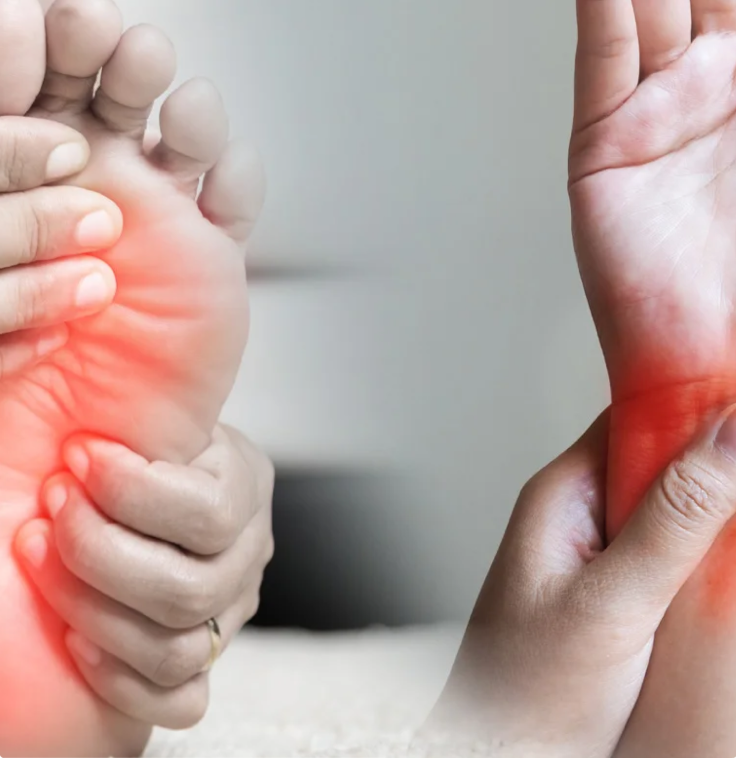
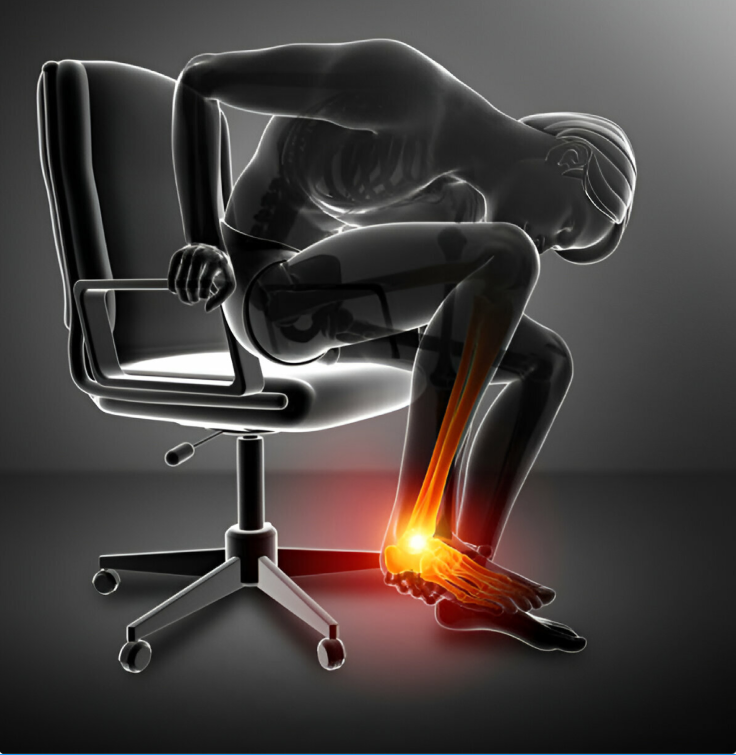
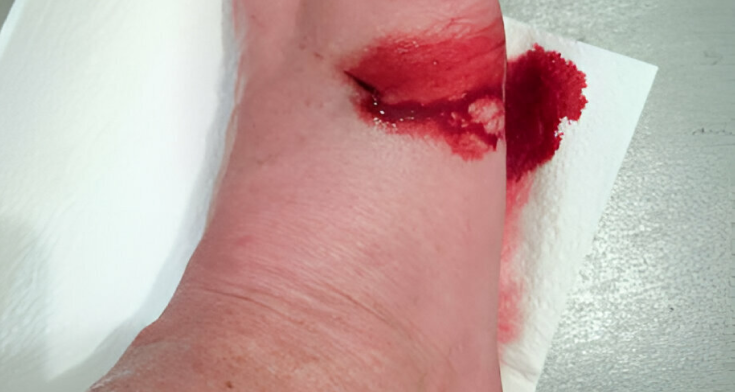




 302-599-6687
302-599-6687